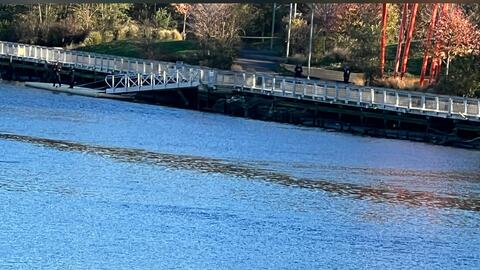By: Richard L. Smith
The Department of Justice and the Environmental Protection Agency (EPA) announced Friday a proposed consent decree with 85 potentially responsible parties, requiring them to pay a total of $150 million to support the cleanup work and resolve their liability for discharging hazardous substances into the Lower Passaic River, which is part of the Diamond Alkali Superfund Site.
EPA officials noted that the Diamond Alkali Superfund Site, in a cooperative effort of the government partners, the PRPs, and the CAG, have supported more than just the site cleanups. These efforts enabled local job creation and the designation of the Passaic River as an Urban Waters Federal Partnership project.
According to Federal officials, The Justice Department and EPA alleged that these 85 parties are responsible for releasing hazardous substances into the Lower Passaic River, contaminating the 17-mile tidal stretch, including the lower 8.3 miles.
Officials said the proposed consent decree seeks to hold the parties accountable for their share of the total cost of cleaning up this stretch of the river.
“Newark, Harrison, and many other vibrant communities have borne the brunt of pollution along the Lower Passaic River for too long,” First Assistant U.S. Attorney Vikas Khanna for the District of New Jersey said.
RLS Media learned that The Diamond Alkali Superfund site includes the former manufacturing facility at 80-120 Lister Avenue in Newark, New Jersey, the Lower Passaic River Study Area (LPRSA), and the Newark Bay Study Area.
The LPRSA includes the 17-mile tidal stretch of the river from Dundee Dam to Newark Bay and tributaries. The Newark Bay Study Area includes Newark Bay and portions of the Hackensack River, Arthur Kill and Kill van Kull.
The area surrounding the site is densely populated and heavily industrialized.
"This agreement is an important step forward. It will support significant cleanup efforts that restore this historic waterway, advance a new chapter of responsible land use, and return the river to the people of New Jersey.
"This agreement holds responsible parties financially accountable for the legacy of pollution in the Lower Passaic River," Assistant Attorney General Todd Kim of the Justice Department's Environment and Natural Resources Division said.
"The settlement will advance the river's cleanup for the benefit of those communities living alongside it who have been historically overburdened by pollution."
"Today's agreement requires those responsible, no matter the extent, to pay their fair share for releasing hazardous substances into the Lower Passaic," Regional Administrator Lisa F. Garcia for the EPA Region 2 said. "This agreement adds to the work we are already doing and will continue to do to get responsible parties to pay for or conduct this cleanup, and it brings us closer to a cleaner, healthier river that can be enjoyed by those who live near its banks, no matter what their economic status."
Officials say on behalf of the EPA, the Justice Department lodged the consent decree with the U.S. District Court for the District of New Jersey.
If and when the settlement becomes final, EPA expects to use the settlement funds to support ongoing efforts to clean up the site, specifically the lower 8.3 miles and the upper 9 miles, which make up the entire 17-mile Lower Passaic River Study Area.
In addition to the proposed consent decree, EPA has reached several related agreements, including one whereby many parties investigated the 17-mile Lower Passaic River, another whereby Occidental Chemical Corporation, a potentially responsible party, is designing the cleanup chosen for the lower 8.3 miles, and several cost recovery agreements that resulted in payments to EPA of millions of dollars.
This consent decree is subject to a 30-day public comment period and is available for public review here.
After the close of the comment period, Justice Department and EPA will evaluate any comments received and prepare a response to the comments. If the government still considers the settlement appropriate, it will seek approval of the consent decree by the court.
